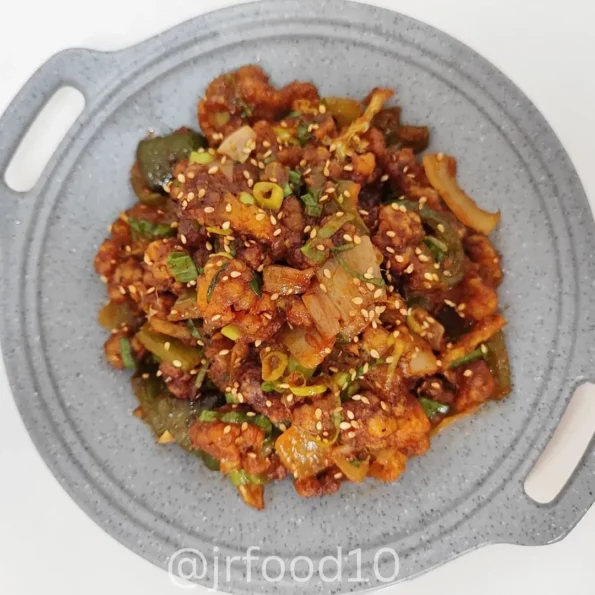
Gobi Schezwan (Cauliflower in Schezwan Sauce)

Gobi Schezwan, a delectable marriage of Indian and Chinese culinary traditions, has a history as rich and vibrant as its flavors. This dish emerged in the vibrant tapestry of Indo-Chinese cuisine, where traditional Chinese cooking techniques collided with the bold and aromatic spices of India.
The genesis of Gobi Schezwan can be traced back to the thriving Chinese community in Kolkata, India, during the mid-20th century. Seeking to cater to local tastes while retaining the essence of their own cuisine, Chinese chefs began experimenting with ingredients and flavors. This led to the birth of Indo-Chinese cuisine, a fusion that struck a harmonious chord between the two culinary worlds.
So we'll guide you through the nuances of creating the perfect Gobi Schezwan at home. From the initial sizzle of the cauliflower in cornstarch to the final flourish of sesame seeds and spring onions, every step promises a delightful revelation.
Some recipes you might want to try:
Gobi Schezwan tantalizes the taste buds with an exquisite dance of crispy cauliflower, perfectly balanced by the bold and fiery symphony of Schezwan sauce, offering a harmonious blend of savory, spicy, and umami notes that leave a lingering, delightful impression.
- 250 gr cauliflower (cut into pieces)
- 1/2 onion
- 1 green bell pepper
- 1 spring onion
- 3 tbsp cornstarch
- Oil for frying
- 1 tbsp soy sauce
- 2 tbsp schezwan sauce (check my recipe for the sauce)
- 1 tbsp chili sauce
- 1 tbsp tomato sauce
- 1 tbsp ginger & garlic paste
- A dash of sesame oil
- 1/2 tsp sugar
- A pinch of salt
- 1/2 tsp mushroom bouillon
- Sprinkled sesame seeds
- Water
Begin by cutting the cauliflower into bite-sized pieces, coating them with cornstarch, and fry until they achieve a crispy texture. Set them aside.
In a pan, heat oil and sauté the ginger and garlic until fragrant. Add the onions and bell peppers, stir well to combine.
Next, add soy sauce, Schezwan sauce, chili sauce, and tomato sauce into the mixture. Stir thoroughly and add a small amount of water.
Once the sauce has reduced, add sugar, salt, and mushroom bouillon. Include the fried cauliflower, ensuring it is well-coated in the flavorful sauce.
Transfer the dish to a serving plate and garnish with sesame seeds and spring onion for an added layer of flavor and texture.
Servings 3
- Amount Per Serving
- Calories 202kcal
- % Daily Value *
- Total Fat 11.5g18%
- Saturated Fat 1g5%
- Sodium 675mg29%
- Potassium 393mg12%
- Total Carbohydrate 22.9g8%
- Dietary Fiber 3.7g15%
- Sugars 6.3g
- Protein 3g6%
- Calcium 46 mg
- Iron 1 mg
* The % Daily Value (DV) tells you how much a nutrient in a food serving contributes to a daily diet. 2,000 calorie a day is used for general nutrition advice.
- Ensure the cauliflower is thoroughly dry before coating it with cornstarch. This helps achieve a crispy texture when frying.
- Fry the cauliflower in batches to avoid overcrowding, allowing each piece to cook evenly and become golden brown.